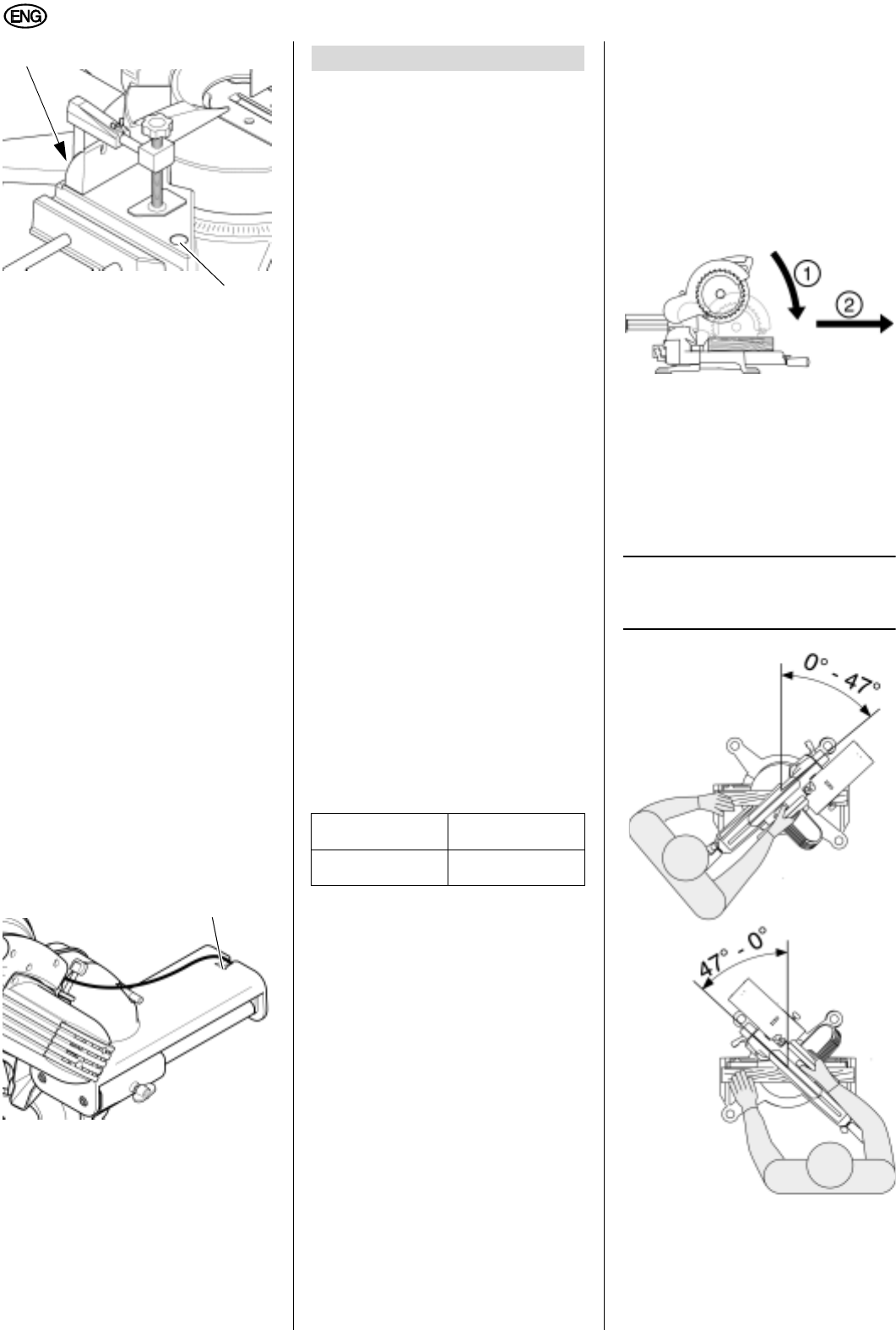
24
ENGLISH
• For narrow workpieces fit the work
clamp in the front hole (61) of the
saw base.
7.8 Mains Connection
B
Danger! High voltage
• Operate this machine in dry sur-
roundings only.
• Operate the machine only on a
power source meeting the follow-
ing requirements (see also "Tech-
nical Specifications"):
− mains voltage and system fre-
quency conform to the voltage
and frequency shown on the
machine´s nameplate;
− fuse protection by a residual
current operated device (RCD)
of 30 mA sensitivity;
− Outlets properly installed,
earthed, and tested.
• Position power supply cable so it
does not interfere with the work
and is not damaged.
Run the power supply cable as
illustrated through the groove
(62). Ensure the cable has suffi-
cient slack, so it will not tighten
when sawing.
• Protect power supply cable from
heat, aggressive liquids and
sharp edges.
• Use only rubber-jacketed exten-
sion cables of sufficient lead
cross-section (3 x 1.5 mm
2
).
• Do not pull on power supply
cable to unplug.
A
Danger!
• Before starting any work, check
to see that the safety devices are
in proper working order.
• Use personal protection gear.
• Assume proper operating posi-
tion:
− at the front of the saw;
− in front of the saw;
− to the side of the line of cut.
• Risk of crushing! When tilting the
sawhead, keep your hands out of
the track arm holder's tilting
range! Hold at the sawhead.
• If the type of work requires, use
the following:
− work support – for long stock,
which would otherwise fall off
the table on completion of the
cut;
− dust extractor.
• Cut only stock of dimensions that
allow for safe and secure holding
while cutting.
• Use an auxiliary fence if small
cutoffs will result when cutting.
• Always hold the workpiece down
on the table and do not jam it. Do
not attempt to stop the saw blade
by exerting lateral pressure. Risk
of injury if the saw blade is
blocked.
8.1 Standard Cross Cuts
Maximum workpiece cross section
(dimensions in mm):
Starting position:
− Transport locking pin pulled out.
− Sawhead fully raised.
− Cutting depth limiter set to maxi-
mum depth of cut.
− Rotating table in 0° position, the lock
screw of the rotating table is tight-
ened.
− Motorhead in vertical (90°) position,
bevel tilt locking lever tightened.
− Track arm not extended.
− Lock screw of the track arm loos-
ened (if workpiece width requires).
Cutting the workpiece:
1. Hold workpiece against the fence.
2. Push the safety lock to the side and
press and hold the ON/OFF switch.
3. Slowly swing the sawhead fully
down, holding the handle firmly.
A
Caution!
When sawing exert only mod-
erate downward pressure on the saw-
head, so the motor speed is not
reduced too much, otherwise the
motor may be overloaded and dam-
aged.
4. On wider workpieces pull the saw-
head forward (towards the opera-
tor).
5. Cut workpiece in a single pass.
6. Release the ON/OFF switch and let
the sawhead slowly return to its
upper starting position.
7. Return the sawhead to the rear posi-
tion.
8.2 Mitre cuts
3
Note:
A mitre cut cuts the workpiece at
an angle against the rear guide edge.
60
61
62
8. Operation
Width approx. 255
Height approx. 60


















